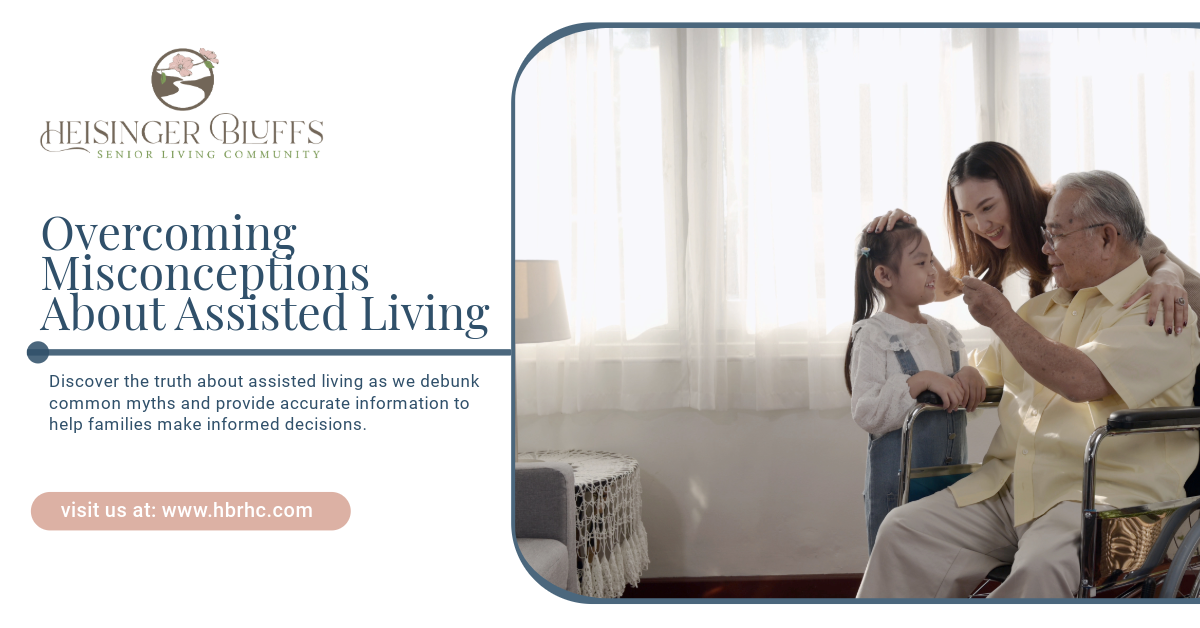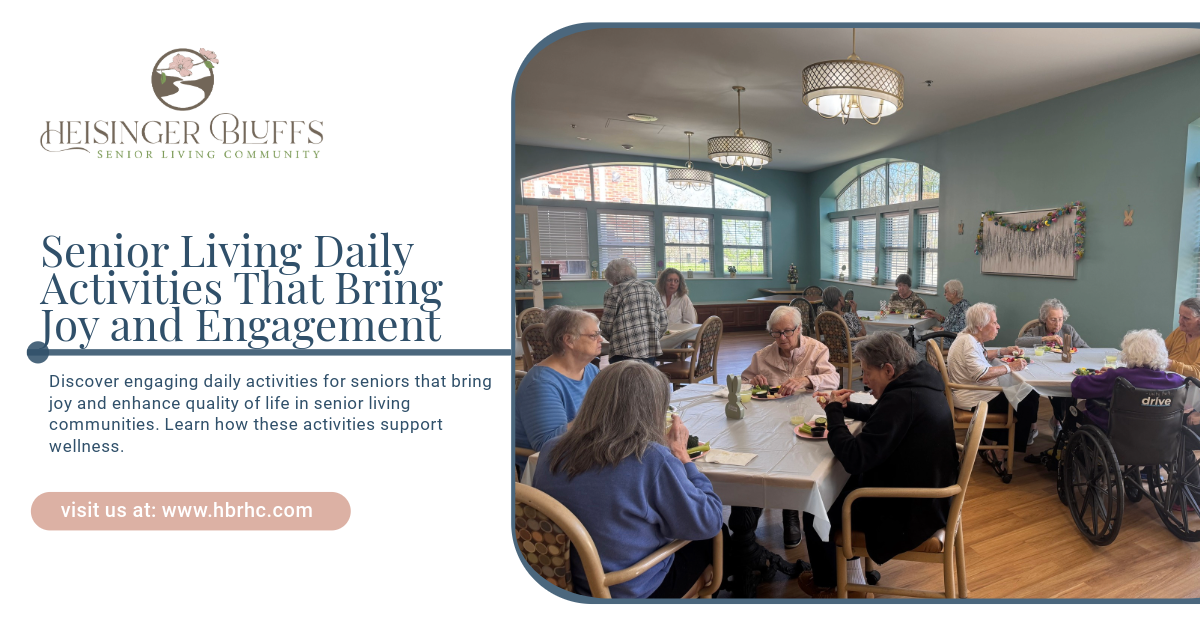Assisted Living Misconceptions: What You Need to Know

Assisted living communities are designed to provide seniors with a blend of independence and support. Despite their many benefits, misconceptions about assisted living often prevent families from exploring this option for their loved ones. These myths can create unnecessary hesitation and confusion during an already emotional decision-making process.
In this blog, we’ll debunk the most common misconceptions about assisted living and provide accurate information to help families make confident and informed choices for their loved ones.
What Is Assisted Living?
Before addressing the myths, it’s important to understand what assisted living truly entails. Assisted living communities offer:
- Personalized Support: Help with daily tasks like bathing, dressing, and medication management.
- Social Opportunities: A variety of group activities, events, and outings to foster connections.
- Safe Environments: Secure and accessible facilities designed to prioritize residents' safety and comfort.
Assisted living is not the same as nursing homes or independent living—it bridges the gap between these options, providing just the right level of care tailored to individual needs.
Common Misconceptions About Assisted Living
Misconception 1: Assisted Living Means Losing Independence
One of the most persistent myths is that assisted living strips seniors of their independence.
Reality: Assisted living is designed to support residents in maintaining as much independence as possible. While help is available for tasks like housekeeping or meal preparation, residents are encouraged to:
- Make their own schedules
- Participate in activities they enjoy.
- Maintain control over their daily routines.
- Staff aim to empower residents, not limit them
Misconception 2: Assisted Living Is the Same as a Nursing Home
Many families assume that assisted living and nursing homes are interchangeable.
Reality: While both provide care, assisted living focuses on maintaining independence with minimal medical intervention. Nursing homes, on the other hand, cater to individuals with more complex medical needs who require 24/7 skilled nursing care.
In assisted living, residents enjoy a more home-like environment with access to recreational and social activities.
Misconception 3: Assisted Living Is Too Expensive
The cost of assisted living is often misunderstood, with many assuming it’s unaffordable.
Reality: While assisted living is an investment, it often consolidates multiple costs into one monthly fee, including:
- Housing
- Meals
- Utilities
- Care services
- Activities
Additionally, financial assistance options, such as long-term care insurance or veterans’ benefits, may help offset costs. Families may find that the value of services provided outweighs the price.
Misconception 4: Residents Are Isolated and Lonely
A common concern is that seniors in assisted living will feel isolated.
Reality: Assisted living communities are vibrant social hubs! Residents have access to:
- Group activities like fitness classes, movie nights, and art workshops
- Shared meals that encourage interaction
- Events and outings to stay connected with the broader community
- Staff members also help new residents integrate, ensuring they feel welcome and included
Misconception 5: Families Are No Longer Involved
Some believe that moving a loved one to assisted living means family involvement ends.
Reality: Family involvement is not only encouraged but essential in assisted living. Communities often offer:
- Family-friendly events and activities
- Opportunities for regular visits
- Communication with staff to stay informed about loved ones’ well-being
- Families remain a critical part of residents’ lives, providing emotional support and companionship
Misconception 6: Assisted Living Is Only for the Elderly Who Are Sick or Disabled
Another myth is that assisted living is solely for individuals who are very ill or have significant disabilities.
Reality: Assisted living is for seniors who need some help with daily tasks but want to maintain an active, engaging lifestyle. Many residents are healthy and vibrant, enjoying the freedom that comes with having support when needed.
Misconception 7: It’s Better to Age in Place at Home
While aging in place at home is ideal for some, it’s not always the best or safest option for everyone.
Reality: Living alone can lead to social isolation and safety risks. Assisted living provides:
- A safe and secure environment
- Opportunities for social engagement
- Immediate access to assistance if needed
- Residents often thrive with the additional support and companionship
How Assisted Living Benefits Residents
By overcoming these misconceptions, families can better appreciate the benefits of assisted living:
- Peace of Mind: Knowing loved ones are cared for in a safe environment.
- Enhanced Quality of Life: Access to social activities, nutritious meals, and personalized care.
- A Sense of Community: Building new friendships and enjoying shared experiences.
- Reduced Caregiver Stress: Families can focus on spending quality time together without the stress of full-time caregiving.
Questions to Ask When Exploring Assisted Living
If you’re considering assisted living for a loved one, asking the right questions can help dispel any lingering myths:
- What services and amenities are included?
- How does the community foster independence?
- What opportunities are there for social interaction?
- How are families involved in residents’ lives?
- Are there financial assistance options available?
Tips for Making the Transition to Assisted Living
- Involve Your Loved One: Include them in the decision-making process to ensure their preferences and concerns are addressed.
- Visit Multiple Communities: Touring several options helps families and seniors find the best fit.
- Focus on the Positives: Highlight the benefits of assisted living, such as social opportunities and reduced household responsibilities.
- Stay Connected: Regular visits and communication can help loved ones feel supported during the transition.
Conclusion
At Heisinger Bluffs, we understand that making the decision to transition to assisted living can be challenging. Our compassionate team is here to answer any questions and provide accurate information to help you and your loved ones feel confident about the future. Contact us today to learn more about our supportive and vibrant community.
Frequently Asked Questions
What’s the difference between assisted living and nursing homes?
Assisted living focuses on maintaining residents' independence while providing support with daily tasks. Nursing homes provide more intensive medical care for individuals with complex health needs.
How can families stay involved in their loved one’s life?
Families can stay connected by visiting regularly, attending community events, and maintaining open communication with staff.
Are assisted living communities affordable?
While costs vary, assisted living often consolidates housing, meals, care services, and activities into one fee. Financial assistance options are available to help manage expenses.











